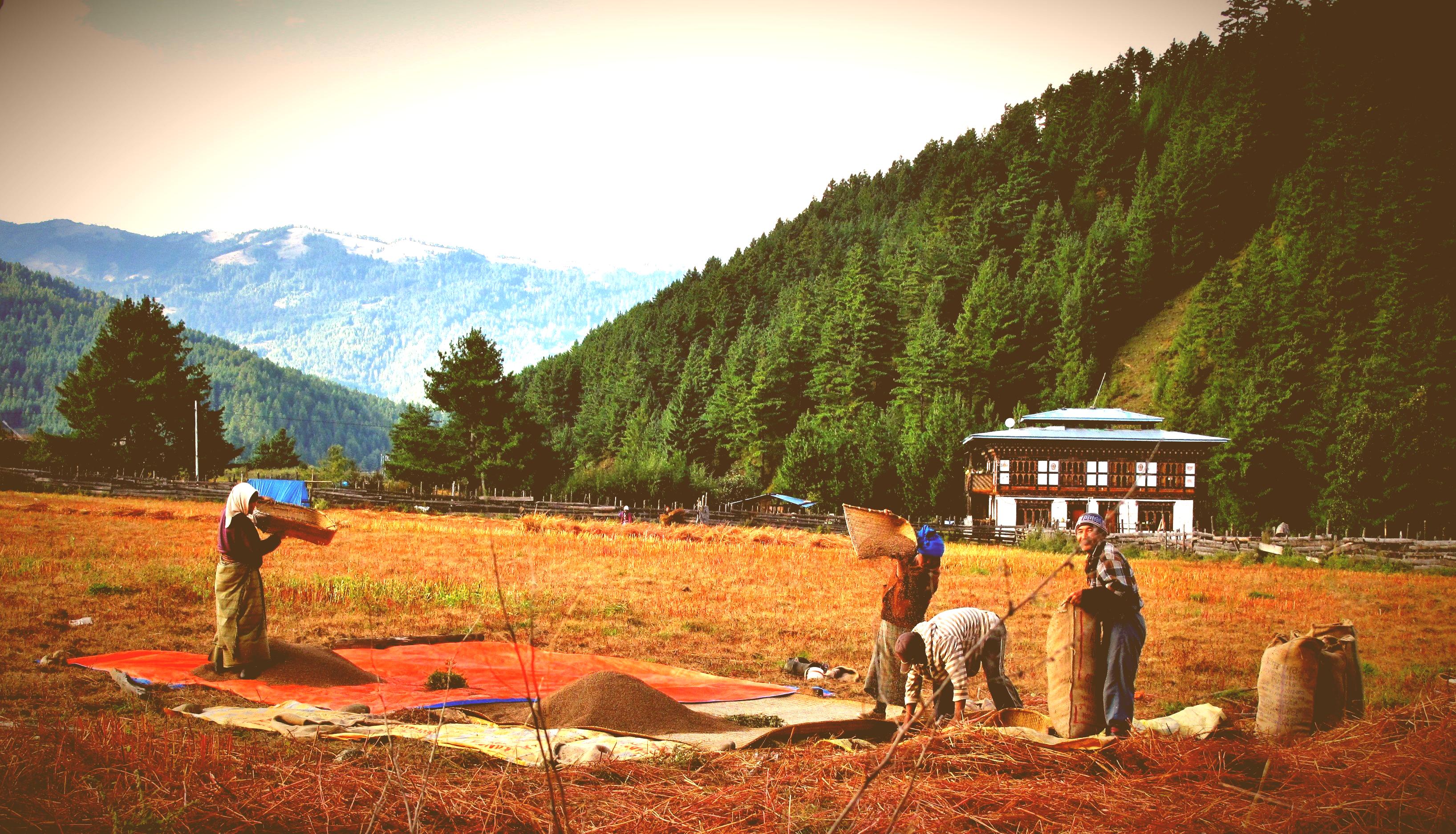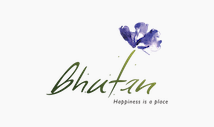Draped along the mighty Himalaya lies tiny Bhutan, cut off from the “outside” for thousands of years. Now Bhutan is opening its gorgeous vistas, peaceful farms and unique traditions to a few lucky visitors. Immerse yourself in welcoming Bhutan, known for its friendly people, stunning scenery and fascinating culture. On this independent journey, see breathtaking dzongs and monasteries, attend a local Buddhist festival and hike to sacred Taktsang (“Tiger’s Nest”) Monastery.
CLASSIC BHUTAN TOURS
7N8D
DAY 1: PARO, BHUTAN/THIMPHU
Arrive Paro:
Paro Altitude: 2,250 m (7,200 feet)
Driving distance: 1 hr. 15 minutes
Flying into the country’s only airport, in the beautiful Paro valley, the clear mountain air, forested ridges, imposing monasteries and welcoming Bhutanese people in their striking national dress, provides a breath-taking first impression. On arrival at Paro airport, you will be greeted by Bhutan Rila’s representative. On completion of airport formalities, drive towards Thimphu. Next check-in to your hotel in Thimphu and later in the in the evening
- Visit the Tashichho Dzong/Fortress of the Auspicious Religion and office of the Golden throne of the Dragon King of Bhutan.
- The beautiful Memorial Chorten/stupa in town is another favorite with the tourists and a regular sight for congregation of devout Buddhists circumambulating the Chorten from dawn till dusk. The main statue of the Buddha inside the Chorten is said to grant wishes for the earnest and honest hearted!
Visit Kuensel Phodrang and Soak in the panoramic view of the Thimphu valley from the site of the gigantic Lord Buddha, a 51-meter bronze Shakyamuni Buddha statue gilded in gold.
OVERNIGHT IN THIMPHU
DAY 2: THIMPHU I CAPITAL CITY
Thimphu with a population of about 130,000 people is one of the last few capital cities without traffic lights and the traffic still managed by traffic policemen. While strictly maintaining the aesthetic beauty and traditional style of architecture in the modern buildings, there are also very old temples and numerous monasteries in and around the city, a few discotheques, Karaoke joints and pubs.
- After breakfast visit oldest place of worship in the capital, Changangkha Lhakhang is located on a small hill some kilometres from the city centre. The shrine houses a brilliant statue of Chenrizig who is thought of as an incarnation of Avolokitesawara.
- Visit the National Library of Bhutan established back in 1967 and is one of the largest collection of literature on Tibetan Buddhism anywhere in the world. It has as many as 6100 books and manuscripts in Tibetan and Bhutanese, and holds over 9000 printing blocks used to create religious texts. The pretty two-storey building is a must-visit on the list of Thimphu things to do.
- Visit Folk Heritage Museum;
- The Institute of the 13 Arts & Crafts of Bhutan
- Then visit Postal Musuem. The postal museum narrates the story of the evolution of communication, transportation and postal services in Bhutan’s history. Its five galleries trace the development of the Bhutanese postal system, from the earliest mail runners to Bhutan’s idiosyncratic and highly collectable modern stamps
OVERNIGHT IN THIMPHU
DAY 3: THIMPHU-PUNAKHA
Driving Distance: 77 kms- 3 hrs.
Punakha/Wangdi Altitude: 1,300 m (4,260 feet)
After breakfast drive to Punakha. Enroute stop over at the Dochulaa Pass (3150 meters) and on a clear day enjoy the spectacular views of the snow-capped Himalayan Mountains. The 108 small stupas built over a small hill is also a beautiful sight. The road from the Pass winds down to the warm and fertile valleys of Punakha. In Punakha enjoy a fascinating hike through fields and small hamlets to Khamsum Yulley Namgyel Chorten.This beautiful structure was built by the current King’s mother for his protection from evil.
In the evening visit the impressive Punakha Dzong / Fortress of Great Bliss built in 1673 by Zhabdrung Ngawang Namgyel (the first spiritual & political leader of Bhutan) to commemorate the final victory against numerous Tibetan invasions. Located on a piece of land between two rivers Pho Chhu and Mo Chhu (literally meaning male and female rivers), the Dzong is massive, huge and magnificent in all its architectural grandeur. Although ravaged by flood, fire and earthquakes many times, the Dzong was always rebuilt with its original pattern and design. The first King of modern Bhutan was crowned in Punakha Dzong. Important religious ceremonies are still held in the Dzong. The Royal Wedding ceremony on 13th October 2011 of the Fifth King Jigme Khesar Namgyel Wangchuck to Jetsun Pema was conducted in Punakha Dzong. From the Dzong enjoy a short walk through a beautiful pathway of giant flowering trees and flowers and on to the longest iron suspension bridge.
Overnight in Punakha
DAY 4: PUNAKHA-PHOBJIKHA/GANGTEY: at 3,000 m (9,840 feet)
After breakfast drive to Gangtey/Phobjikha valley.On the wayvisit the Fertility Temple / Chime Lhakhang is a must for its unique Phallic paintings on the walls of the houses and symbols. It is a pleasant 30 minutes walk through mustard and paddy fields. Standing on a picturesque hilltop the Lhakhang is famous for its fertility wish grants to couples. Inside the walls of the Lhakhang are beautiful frescoes depicting the colorful life of Lama DrukpaKuenley, the Divine Madman regarded for his crazy methods of teaching that included blessing women in the form of copulation!
The Gangteng Monastery-generally known as Gangtey Gonpa is an important monastery of Nyingmapa school of Buddhism, the main seat of the PemaLingpa tradition. The Monastery’s history traces to the early 17th century and back to the prophecies made by the well-known Terton (treasure finder) PemaLingpa in the late 15th century. The present Abbot, KunzangPemaNamgyal is the ninth re-incarnation. The descent of the first king of Bhutan, UgyenWangchuck of the Wangchuk Dynasty of Bhutan, which continues to rule Bhutan is traced to the clan of the DungkharChoje, a subsidiary of the clan of KhouchungChoje whose founder was KungaWangpo, the fourth son of PemaLingpa.
Overnight in Gangtey
DAY 5: PHOBJIKHA
Gangtey in Phobjikha Valley offers plenty of opportunity to hike, with marshlands, lots of flat open terrain and, being away from the more heavily touristed areas, ultimate peace and serenity. After a day exploring the area at your leisure, you can check back into your hotel for a gourmet dinner.
Overnight in Gangtey
DAY 6: PUNAKHA-PARO
After breakfast drive back to Paro. Stopover at Dochula. Dochula Pass is one of Bhutan’s most famous sites, perched at an altitude of 10,200 feet and located along the road from the country’s current capital of Thimphu to its former capital Punakha. A hidden surprise awaits the few who take the time to venture away from the touristy hub. These curious visitors will discover the meditation caves tucked into the hills just above the pass. At first resembling Hobbit homes, these tiny, open-faced caverns are built from stone and painted in colorful detail with Buddhist symbolism. The druk, or dragon—Bhutan’s long-time national symbol and spirit animal—stretches over the cave entrance, bringing good luck and good tidings.
On the way to Paro- visit Tachog Lhakhang. Tachogang means ‘temple of the hill of the excellent horse’. It is said that while Thangtong Gyalpo was meditating here, he had a vision of the spiritual horse Balaha-an emanation of Avalokiteshvara. He decided there upon to build a temple at this spot, in addition to one of his famous iron bridges later carried away by floods in 1969. A traditional style bridge with iron chains was restored in 2005. The temple is privately run by the descendents of Thangtong Gyalpo.
Later in Paro visit Kyichu Lhakhang, RInpung Dzong and National Musuem of Bhutan.
Overnight in Paro
DAY 7: PARO | HIKE TO THE TAKTSANG (“TIGER’S NEST”) MONASTERY
No journey to Bhutan is complete without a visit to Takstang monastery. After breakfast drive through Paro valley-one of the most beautiful valleys in Bhutan with its slate-roofed farmhouses, graceful willow trees and rushing glacial river beneath snow covered peaks to take an excursion to Taktsang Monastery, also known as Tiger’s Nest, (one of the most sacred places in Bhutan due to its association with Guru Rinpoche). It is believed that Guru Rinpoche reputedly flew to Paro Taktsang cliff in the form of Guru Dorji Drolo, mounted on a flaming dakini-tigress in the 747 A.D., where he meditated and subdued evil spirits. Later in the evening visit Paro town and explore at your own.
Overnight in Paro
DAY 8:DEPART BHUTAN
After breakfast an early morning transfer to Paro Airport for your onward flight. Thank you for visiting Bhutan.





